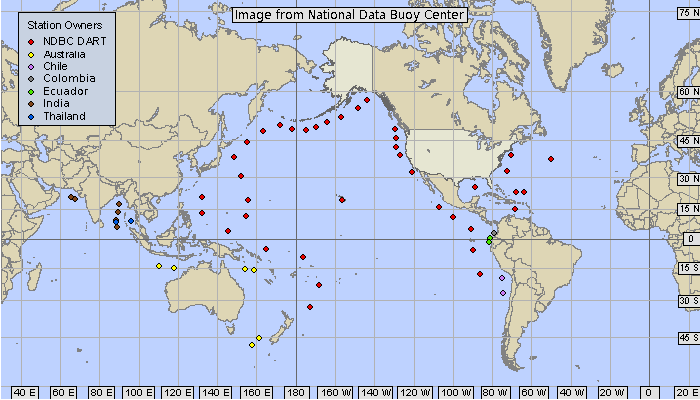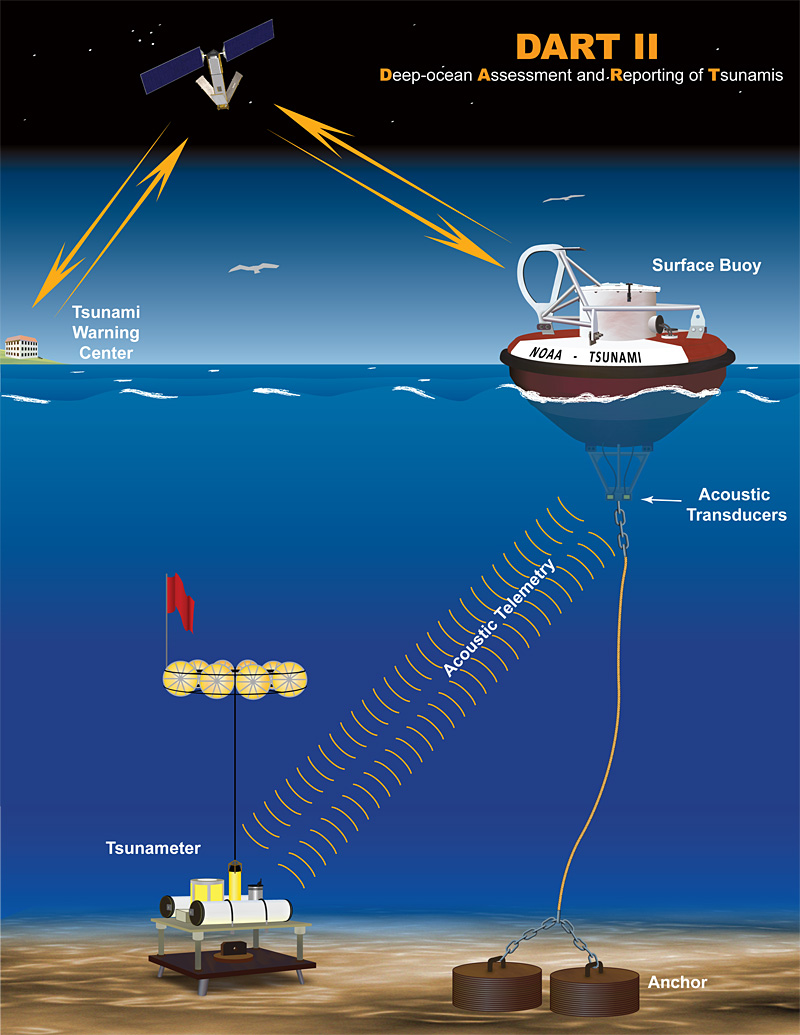Until recently, there was no way to know for sure if an earthquake had generated a tsunami or how big it might be until it arrived at the coast – if it ever did. Recognizing the importance of detecting tsunamis in real time as they travel across the open ocean, NOAA developed a tsunami measurement system called Deep-ocean Assessment and Reporting of Tsunami (DART).
The first DART systems were deployed in the Pacific Ocean in 2000. Interest in the early detection, measurement, and real-time reporting of tsunamis peaked following the 2004 Indian Ocean tsunami.
In response to this event, the U.S. expanded its DART network to 39 systems strategically located throughout the Pacific and Atlantic Oceans, the Gulf of Mexico, and the Caribbean Sea. Today, six other countries also operate and maintain DART systems as part of the global network of more than 60 systems.

DART systems are designed to sense pressure changes at the bottom of the ocean caused by passing tsunamis and to communicate these changes to the tsunami warning centers. Each DART system consists of a bottom pressure recorder anchored to the ocean floor and a separately moored companion surface buoy.
When a tsunami passes over a pressure recorder, the instrument detects and measures changes in the overlying water pressure that result from the changes in water depth (a tsunami crest increases water depth while a trough decreases water depth). It uses this information to estimate sea-surface heights (height of the ocean surface above the ocean floor), which can be as small as 0.4 inch (1 centimeter).
This pressure change information is transmitted via soundwaves to the surface buoy. The buoy then sends it via satellite to the warning centers where the information is processed and used in tsunami forecast models to update tsunami messages.
NOAA scientists and engineers continue to work on the DART technology to improve effectiveness and efficiency. The newest DART systems are able to detect and measure a tsunami very near to its earthquake source.
These new systems are able to provide valuable information to warning centers faster than any previous DART system. This is especially important for local tsunamis, when waves may inundate coasts just minutes after generation.



